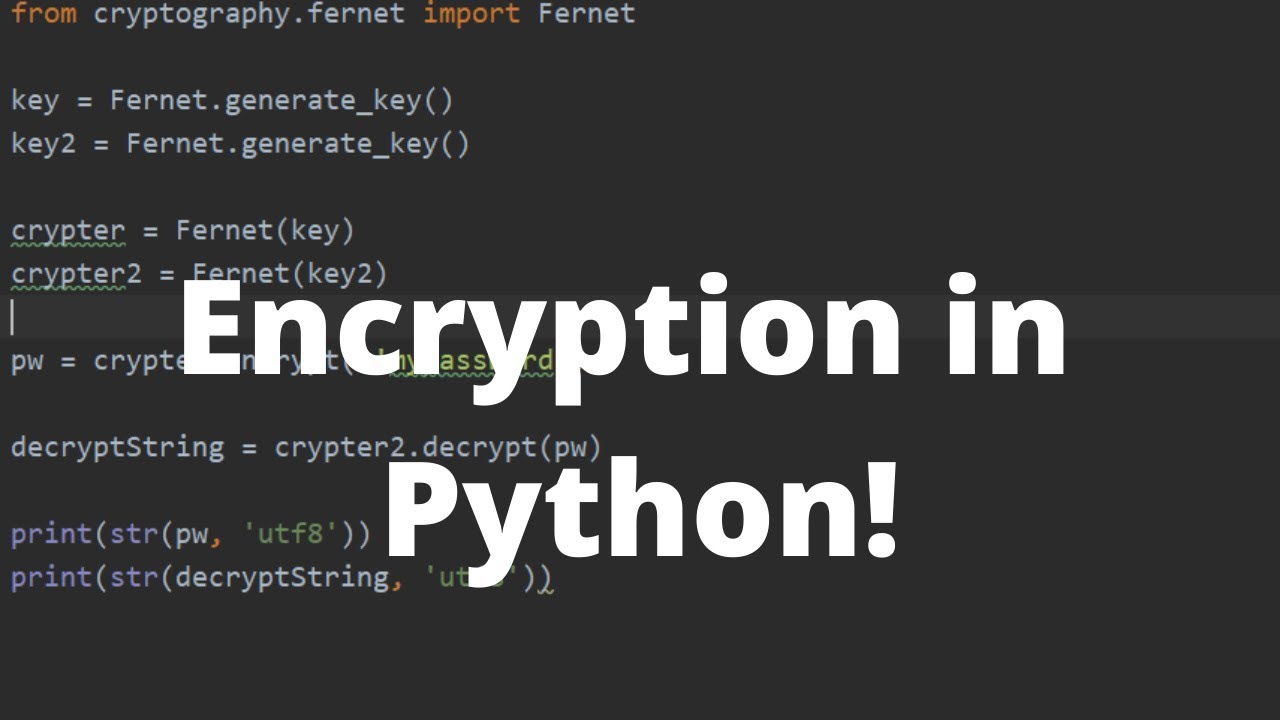In an era dominated by rapid technological advancement, the urgency for securing digital environments cannot be overstated. The phenomenon of compromising personal data has reached alarming heights, compelling individuals and organizations alike to seek robust measures for safeguarding their privacy. One innovative approach that has garnered attention is the utilization of Python for encrypting entire operating systems (OS). This article delves into the multifaceted process of OS encryption using Python, addressing the complexities and implications that arise from such a powerful endeavor.
Let us first explore the foundation of OS encryption. Encryption serves as a formidable barrier against unauthorized access, transforming readable data into an indecipherable format. When discussing full disk encryption (FDE), it becomes pivotal to delineate the difference between file-level encryption and full-volume encryption. In scenarios where an entire operating environment is secured, the latter forms a necessary shield. This not only precludes external threats but also insulates data during instances where the device is lost or stolen.
The common observation is that many people assume encryption is solely for large organizations or those harboring sensitive information. However, a deeper inquiry unveils that even average users harbor a wealth of personal data—financial records, private correspondences, and more. Each piece of information is a potential target for cybercriminals. Therefore, employing encryption, particularly within the household, is an increasingly pertinent need.
At the core of Python’s appeal for OS encryption lies its versatility and simplicity. Equipped with an extensive library ecosystem, Python offers numerous tools to implement cryptographic protocols effectively. One such library, `Cryptography`, provides both high-level recipes and low-level interfaces to common cryptographic tasks. This adaptability makes Python an indispensable tool for developers who wish to integrate encryption into their operating systems seamlessly.
To embark on the journey of OS encryption with Python, practitioners must first comprehend the architectural intricacies of their chosen OS. Different systems, such as Windows, macOS, and Linux, employ distinct methodologies for managing disk encryption. For instance, Windows integrates BitLocker, whereas Linux often utilizes `dm-crypt`. By interfacing Python with these existing frameworks, one can create a comprehensive encryption solution tailored to the needs of the user.
The initial steps involve securing the payload: sensitive data residing on the disk. Python can facilitate the writing of scripts that engage with the system’s underlying storage mechanisms. Accessing and manipulating disk sectors directly is a complex task requiring elevated privileges. However, libraries such as `pyAesCrypt` can aid in encrypting files through robust symmetric encryption algorithms like AES (Advanced Encryption Standard). This elevates the encryption process, ensuring that all extracted data remains encrypted until actively accessed.
Furthermore, understanding key management emerges as a quintessential component of encryption protocols. A strong encryption key is essential to the efficacy of any encryption process. Utilizing Python, one can develop algorithms that generate cryptographically secure keys, storing these securely to prevent unauthorized access. Techniques such as storing keys in hardware security modules (HSM) or employing secure passphrase prompts can significantly enhance the integrity of the encryption process.
Transitioning toward the execution phase, implementing full OS encryption brings a plethora of challenges. One notable difficulty is the ephemeral nature of decryption keys. Upon booting the device, the system must temporarily mount the encrypted volume, which necessitates a careful orchestration of keys and user authentication. Python can be employed to create boot scripts that trigger the decryption process seamlessly while maintaining rigorous security measures throughout the operation.
Next, comprehending the user experience plays a crucial role, particularly regarding usability versus security. Many users may find complicated encryption processes daunting, leading to lower adoption rates. Striking a balance between sophisticated encryption and user-friendliness is paramount. Python’s flexibility allows developers to create intuitive interfaces that can guide users through the encryption stages, rendering the process accessible without sacrificing security.
It is also essential to ponder the ethical implications of full OS encryption. The gravitas of encryption can empower users, granting them unilateral control over their data. However, this power is accompanied by the responsibility of securing that information against inadvertent loss. Python developers must therefore advocate for comprehensive backup solutions that operate concurrently with encryption, ensuring that data remains recoverable while intact. This dual-edged sword requires astute awareness to navigate effectively.
In examining the broader implications of OS encryption through Python, one must also consider the influence it has on the evolving landscape of cybersecurity policy. As encryption technologies become more inherent to individual computing, legislative bodies may confront the challenge of establishing regulations that both protect user privacy and deter criminal activity. Navigating this quagmire of privacy versus security is one that society will continue to grapple with in the coming years.
In summation, the endeavor of encrypting an entire OS with Python is not merely a technical pursuit; it embodies a significant movement toward safeguarding personal privacy in an increasingly digital age. With persistent threats lurking at every turn, employing comprehensive encryption strategies could prove to be the keystone of a secure operating environment. Through education, ethical implementation, and user-centered design, Python can empower users to vanguard their digital lives. The mind’s fascination with cryptography is not merely a quest for technology; it signifies a deeper yearning for autonomy in a world where data is both powerful and vulnerable.







Leave a Comment